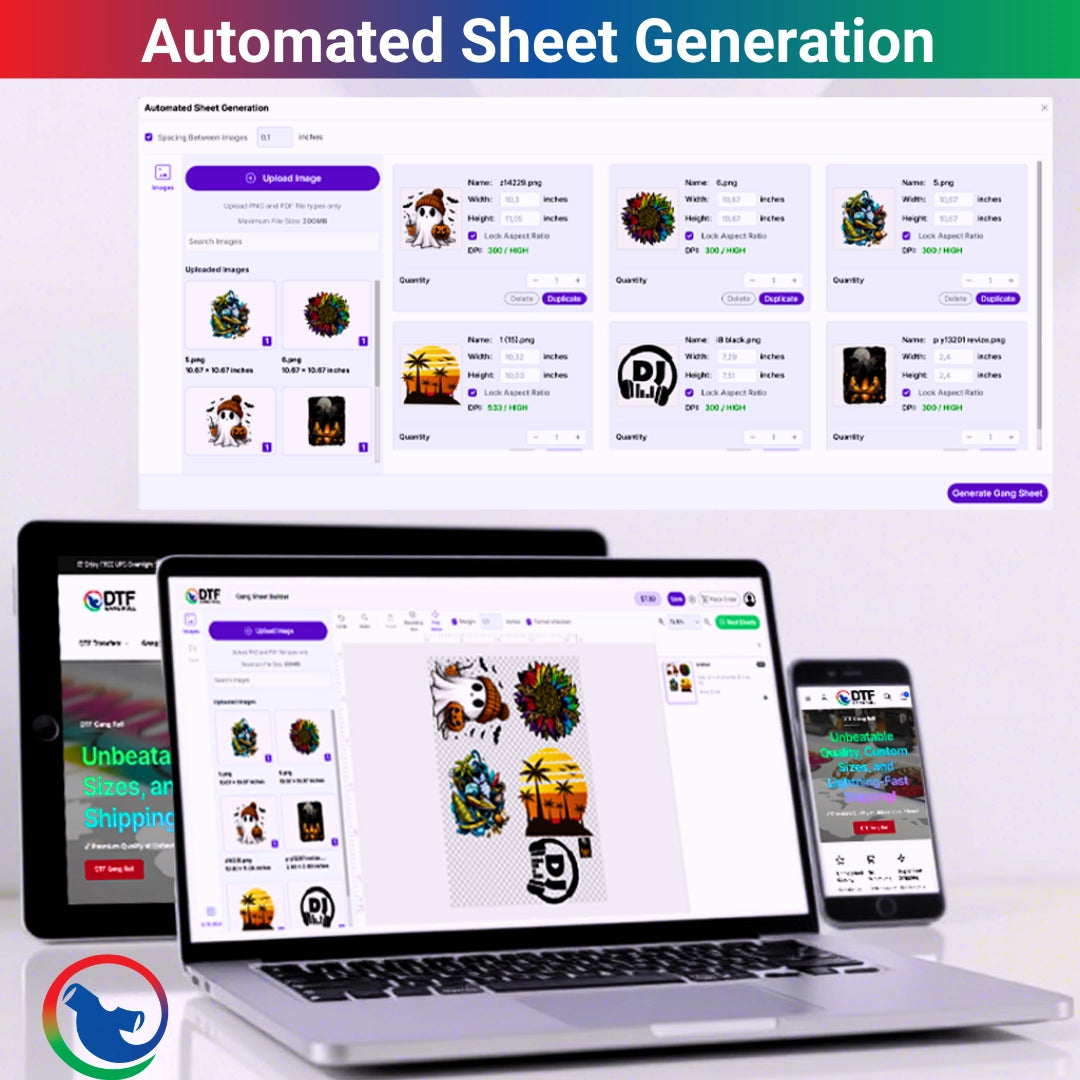To make your artwork come to life on apparel, choosing the right printing method is essential. DTF printing and conventional screen printing are two prominent choices. Each has benefits, and by understanding how each works, artists, small business owners, and fashion entrepreneurs may make smarter decisions.
Without using any fancy phrases or language. Let's take a closer look at DTF vs. screen printing and discuss the differences.
What Is DTF Printing?
DTF printing stands for Direct to Film printing. It involves printing your design onto a special film using a dedicated printer. Once the image is printed, a layer of adhesive powder is applied and melted using heat. The printed film is then heat pressed onto the fabric. This method works great on both light and dark materials.
Whether you're making custom t shirt printing for your brand or designing limited run pieces, DTF makes the process fast and cost effective. It's especially useful for custom shirt transfers and full color graphics.
What Is Screen Printing?
Screen printing, or silkscreen printing, is a traditional method where ink is pushed through a mesh screen onto fabric. A separate screen is required for each color, making it time consuming and better suited for large batches.
Screen printing vs. DTF for clothing may still benefit the older technique if you're doing thousands of identical designs. But when it comes to small runs or intricate graphics, screen printing is limited.
DTF vs. Screen Printing
Let’s look at how DTF vs traditional screen printing stack up across different factors:
1. Design Flexibility
- DTF transfers support high resolution images, gradients, and fine details. You can print complex artwork, photography, or colorful logos with ease.
- Screen printing is better for bold, simple graphics with limited color use.
Winner: DTF printing
2. Fabric Compatibility
- DTF works well on cotton, polyester, blends, and even leather.
- Screen printing struggles with synthetic fabrics unless special inks are used.
Winner: Direct to film printing
3. Cost & Setup
- Screen printing requires expensive screens and longer setup time, especially for multi color designs.
- Custom DTF printing has minimal setup and is ideal for short runs.
Winner: DTF printing
4. Durability
- Screen printed garments are known for long lasting prints.
- DTF transfers are also durable, especially with proper heat pressing and washing.
Tie: Both perform well if done correctly.
5. Small Orders and Personalization
- For custom shirt transfers, DTF is unbeatable. You can print a single shirt or one hundred, without extra cost.
- Screen printing becomes cost effective only at high volumes.
Winner: DTF gang sheets and short runs
Why More Creatives Are Choosing DTF
Creatives love freedom, and that’s what DTF printing gives. You don’t need to worry about order quantity, number of colors, or fabric type. Simply upload your design, and everything else will go smoothly.
Small companies and owners of internet stores may now provide personalized clothing with professional quality and quick turnaround thanks to the growth of heat transfer printing.
Make sure to evaluate the film quality, color accuracy, and shipment speed of the DTF printing business you are looking for. Additionally, if money is tight, search for stores that provide DTF transfers at reasonable prices without sacrificing quality.
When to Use Screen Printing Instead
Let’s be honest, DTF vs screen printing isn’t always a one size fits all decision.
Go for screen printing if:
- You’re producing over 500 shirts with one or two colors.
- Your design is simple and bold.
- You're printing on cotton heavy fabrics and want the ink to embed into the fibers.
Otherwise, DTF will give you flexibility, savings, and better results for creative projects.
DTF Gang Sheets: A Game Changer
DTF gang sheets are perfect for artists and small brands. You can fit multiple designs on one sheet and cut them individually. Gang sheets allow you to print more efficiently and save more money on labels, logos, and full-size prints.
For artists that sell on Etsy, Shopify, or at regional craft fairs, this is quite helpful. You keep an eye on your stock and only replenish what you require.
Conclusion
In the battle of screen printing vs DTF for apparel, there’s no denying DTF offers unmatched convenience for creatives. It allows small runs, delivers crisp prints, and adapts to almost any project or fabric.
That said, screen printing still has its place in the commercial world. But for anyone exploring custom t-shirt printing, trying new art styles, or launching limited edition merch, DTF makes more sense.
If you're ready to try DTF, we recommend checking out DTF Gangroll for affordable DTF transfers and the best DTF printing service that gets your designs printed fast and professionally.
FAQs
1. What is the main difference between DTF and screen printing?
DTF uses film and heat transfer, while screen printing uses ink pushed through screens.
2. Is DTF printing good for small orders?
Yes! DTF is ideal for small batches or even single shirts without setup costs.
3. Can I use DTF transfers on polyester shirts?
Absolutely. DTF works great on polyester, cotton, blends, and other fabrics.
4. Does DTF printing fade after washing?
No, when heat pressed properly, DTF prints stay vibrant through multiple washes.
5. Are DTF gang sheets worth it for artists?
Yes, gang sheets let you print multiple designs at once, saving time and money.

